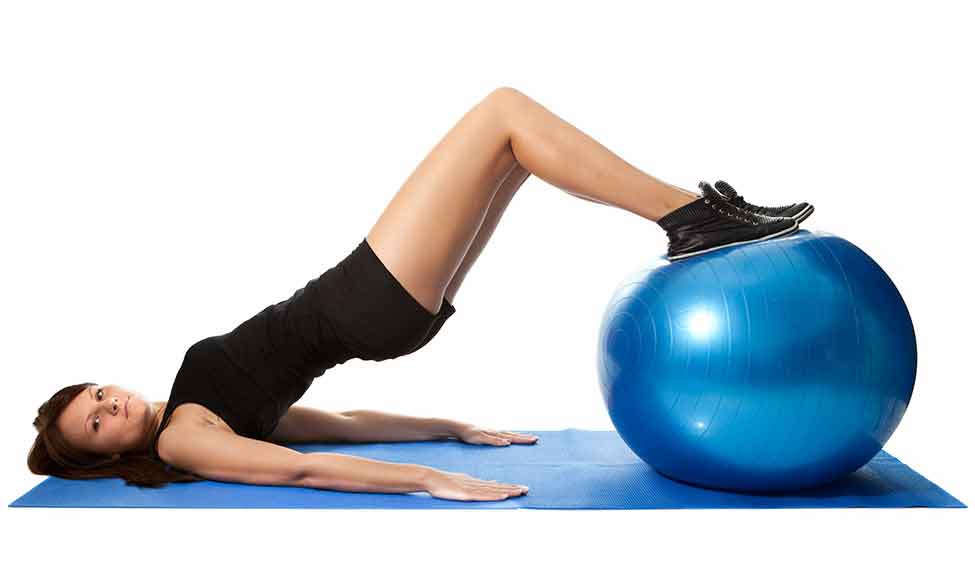Most people suffer from low back pain at some point in their lives and resort to different interventions such as exercise, education, back belts and shoe insoles for relief.
A review of 23 studies that included 30,850 people published in the journal JAMA Internal Medicine found that the most effective intervention is exercise, alone or in combination with education about back pain, exercise and correct posture.
Exercise alone reduced the risk of low back pain by 35 per cent and cut the use of sick leave by 78 per cent. Exercise and education combined reduced the risk of low back pain by 45 per cent.
But other strategies such as back belts and shoe insoles were not effective in preventing back pain.
The trials included different exercise programmes that focused on strength, flexibility, posture, skill, aerobic fitness and strength of back and core muscles. “The exercises did not just focus on the spine but included upper and lower limb exercises as well.”
But the benefits of exercise and education did not last beyond a year.
"This finding raises the important issue that, for exercise to remain protective against future (low back pain), it is likely that ongoing exercise is required," the study authors wrote.

The downside of being higher up
Living in high-rises is becoming the norm in urban areas and people prefer upper floors for their panoramic views and privacy. But it comes with a downside.
A Canadian study published in the Canadian Medical Association Journal finds that people living above the third floor are less likely to survive a cardiac arrest.
The odds of survival decreased the farther the patient was from the ground floor. The study was based on 8,216 people who had cardiac arrests in private residences and were treated by emergency first responders; 3.8 per cent of them survived to be discharged from hospital.
Of the 5,998 people living below the third floor, 252 (4.2 per cent) survived compared to 48 (2.6 per cent) of the 1,844 people living above the third floor. Only 0.9 per cent of those living above the 16th floor (two of 216) survived and there were no survivors (0 of 30) in those living above the 25th floor.
It takes longer for first responders to reach patients who live higher up. Hence, treatment is delayed.
Patients have a greater chance of survival the sooner they are defibrillated, shocking the heart back to a normal rhythm.
Giving first responders easy access to doors and elevators without public interference can improve survival. CPR/ AED training for residents of high-rise apartments and easy availability of automated external defibrillators in such buildings can also be helpful.
“After collapse from sudden cardiac arrest, early bystander CPR and a shock from a publicly accessible automated external defibrillator can make the difference between life and death. Effective CPR performed by a bystander immediately after cardiac arrest can more than double a person's chance of survival, but only 30 per cent of cardiac arrest victims get CPR from a bystander," says the study.

More ayes for statins
Taking statins before and after heart bypass surgery can reduce the risk of complications post-surgery and also the risk of death during and after surgery, according to a review article published in The Annals of Thoracic Surgery.
Statins also have anti-inflammatory properties. “Right after bypass surgery, there is intense inflammation of the heart. Perhaps starting statins two weeks before the surgery reduces the level of inflammation,” the lead researcher suggested.
Taking statins before and after bypass surgery reduced the incidence of atrial fibrillation—irregular heartbeat—by 58 per cent and the risk of dying in the hospital after the operation by 43 per cent.
Even patients who are already on statins are often advised to discontinue the medication at the time of bypass surgery due to concerns about adverse effects such as muscle pain or muscle damage.
But “the results of our review call for proactive efforts to counsel patients and surgeons about the benefit of statins—a benefit that definitely outweighs the risk of rare potential side effects”.

How long?
Contrary to conventional advice to wait for at least three months before conceiving after a miscarriage, a US National Institutes of Health study published in Obstetrics & Gynecology suggests that couples who try to conceive again within three months have equal or even better chances than couples who wait for three months or more.
The study focused on 1,083 women, aged 18 to 40 years, more than 99 per cent of whom had lost a pregnancy at less than 20 weeks gestation.
More than 76 per cent of the women tried to conceive within three months of a miscarriage. They had a 53 per cent chance of having a successful pregnancy compared with a 36 per cent chance for couples who waited longer. They also took a significantly shorter time to achieve a successful pregnancy than couples who waited longer. There was no increased risk of pregnancy-related complications such as high blood pressure or diabetes in this group either.
“While we found no physiological reason for delaying attempts at conception following a pregnancy loss, couples may need time to heal emotionally before they try again. For those who are ready, our findings suggest that conventional recommendations for waiting at least three months after a loss may be unwarranted,” said the lead author.
Did You Know
Pregnant women who take the oral antifungal drug fluconazole for vaginal yeast infection have a nearly 50 per cent increased risk for miscarriages.
The Journal of the American Medical Association
Be warned
The US Food and Drug Administration is warning consumers against the use of a male sexual enhancement product called Wonder-Erect Male Gum that is available on various websites, including amazon.
Wonder-Erect Male Gum contains an undeclared ingredient called vardenafill, which is the active ingredient in the FDA-approved prescription drug Levitra used to treat erectile dysfunction.
Vardenafill can cause serious side effects when it interacts with nitrates found in some prescription drugs used to treat diabetes, high blood pressure, high cholesterol or heart disease. It can lower blood pressure to very dangerous levels.
According to the FDA, there is a growing popularity for dietary supplements that are marketed for sexual enhancement, weight loss and body building. These products are often promoted as being all natural. But they contain many hidden drugs and chemicals which can cause serious adverse effects, including death.
“Consumers should exercise caution before purchasing any product in the above categories.”
Did You Know
Greater intake of dietary nitrate found in green leafy vegetables such as spinach, lettuce, cabbage and kale as well as carrots and beets is associated with a 20 to 30 per cent lower risk of glaucoma.
JAMA Ophthalmology
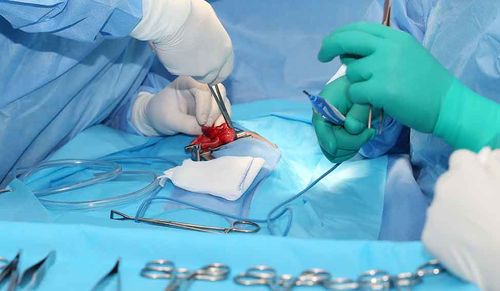
Tumour torch
An early trial has yielded promising results for a new injectable agent that makes cancer cells in a tumour fluoresce or light up. This could help surgeons identify and remove all the cancerous tissue in the first attempt.
The goal of cancer surgeons is to remove a tumour and its surrounding tissue. But sometimes microscopic residual cancer can be left behind, requiring a second surgery and radiation therapy.
“At the time of surgery, a pathologist can examine the tissue for cancer cells at the edge of the tumour using a microscope, but because of the size of cancer it’s impossible to review the entire surface during surgery. This new imaging technique is meant to help the surgeon see the cancer during the operation, to avoid the patient having to go in for a second operation," said the senior author.
According to findings published in Science Translational Medicine, the injectable agent, a blue liquid called LUM015, was successfully tried in 15 patients undergoing surgery for soft-tissue sarcoma or breast cancer, without adverse effects.
LUM015 is injected directly into the region where the cancer is located. The liquid then accumulates in tumours and glows an average five times brighter than healthy tissue. The light is not visible to the naked eye.
After a tumour is removed, surgeons would place a specially designed hand-held imaging probe on the surgical site which will guide them to the areas with fluorescent cancer cells. Surgeons can remove all the cancer cells, eliminating the need for follow-up surgery.
“If this technology is successful in subsequent trials, it would significantly change our treatment of sarcoma. If we can increase the cases where 100 per cent of the tumour is removed, we could prevent subsequent operations and potentially cancer recurrence. Knowing where there is residual disease can also guide radiation therapy, or even reduce how much radiation a patient will receive.”
The new technology was developed by scientists at Duke University, the Massachusetts Institute of Technology and Lumicell Inc.

Women at greater risk
Having an irregular heartbeat, or atrial fibrillation (AF) is a bigger health threat to women than men, according to a review of 30 studies involving 4.3 million patients published in The BMJ.
Atrial fibrillation increases the risk of stroke, heart disease, heart failure and death and affected nearly 33.5 million people globally in 2010.
Women with atrial fibrillation were twice as likely to suffer a stroke as men with the condition. They were also 93 per cent more likely to die from a cardiovascular event, 55 per cent more likely to suffer a non-fatal heart attack or cardiac death, 16 per cent more likely to develop heart failure and 12 per cent more likely to die from any cause compared to men.
According to the researchers, women may be diagnosed later than men, or their symptoms may not be the same as men, or women with AF may be under-treated compared to men or women may not respond as well to AF drugs as men or atrial fibrillation may be more severe in women than in men.
Women with AF should try to eat healthy, exercise regularly, manage their stress and keep their blood pressure and cholesterol at healthy levels.
“It might be appropriate for clinicians to consider more aggressive treatment of risk factors in women with AF as they seem to be at higher proportional risk of death and cardiovascular disease,” the study concluded.

Shower heals
Post-surgery, patients are often advised against showering until the stitches are removed, which can be days and even weeks later.
But a study in the Annals of Surgery suggests that most patients can shower 48 hours after surgery without increasing the risk of surgical site complications and infections.
The study included 444 patients undergoing thyroid, lung, inguinal hernia and face and extremity surgeries with clean wounds. Half the patients were allowed to shower 48 hours after surgery and the other half were asked to keep the wound dry.
Patients who showered used just water and avoided soap or cleanser at the surgical site and did not submerge the wound.
Within two weeks of surgery, four patients in the shower group and six in the non-shower group had superficial surgical site infections, a difference too small to be of significance.
Both groups reported comparable pain scores after surgery. But patients in the shower group were more satisfied with wound care, and their wound care costs were lower than the non-shower group.
“Clean and clean-contaminated wounds can be safely showered 48 hours after surgery. Postoperative showering does not increase the risk of surgical site complications. It may increase patients' satisfaction and lower the cost of wound care,” the study concluded.
Did You Know
Compared to prostate cancer patients who were not treated with hormone therapy, those treated with androgen deprivation therapy (ADT) had an 88 per cent increased risk of an Alzheimer's diagnosis during a three-year follow-up period. The risk more than doubled for men treated with ADT for longer than 12 months.
Journal of Clinical Oncology

Headache with no pause
Migraine headaches become more frequent as women approach menopause, according to a US study published in Headache: The Journal of Head and Face Pain.
"Women have been telling doctors that their migraine headaches worsen around menopause, and now we have proof they were right. Changes in female hormones such as oestrogen and progesterone that occur during the perimenopause might trigger increased headaches during this time," the study authors noted.
The study included 3,664 women who suffered migraine headaches before and during their menopausal years. The risk for high-frequency headaches—more than 10 days with headache per month—increased by 60 per cent during perimenopause (the transitional time before menopause marked by irregular menstrual cycles) compared to women with normal cycles.
The risk of headache was highest during the later stage of the perimenopause, when women start skipping menstrual periods and oestrogen levels are low. Women reported 76 per cent increase in the frequency of migraines during menopause. But according to the researchers, these headaches may be the result of medication overuse.
"Women as they get older develop lots of aches and pains, joints and back pain and it is possible their overuse of pain medications for headache and other conditions drive an increase in headaches for the menopause group."
The researchers recommend hormonal therapies to help women with frequent migraines. "If the patient is in early perimenopause, you can give birth control pills that level things out. If they are in the late perimenopause and they start skipping periods, they can be put on oestrogen patches."
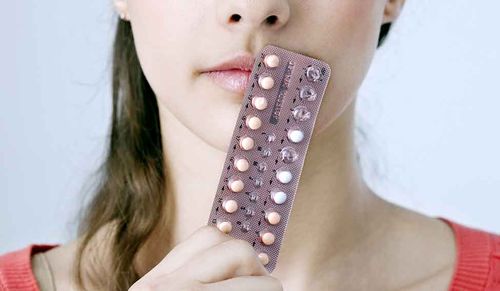
The pill doesn't imperil
Taking oral contraceptives just before, or even during pregnancy, is not associated with an increased risk of birth defects, according to a Harvard and Danish study published in The BMJ.
“The pill” is a widely used form of contraception, but around 9 per cent of women become pregnant within the first year of taking them, mostly due to missed doses, illness or drug interactions. Or women may stop taking the pill because they want to get pregnant and may conceive within just a few menstrual cycles. In such cases, the foetus may be exposed to the sex hormones in the pill, which can potentially cause birth defects.
The study focused on 8,80,694 newborns; 2.5 per cent of the infants had birth defects within the first year of life.
Based on the information from a national prescription registry, a fifth of the mothers had never used oral contraceptives and more than two-thirds had stopped taking them at least three months before becoming pregnant. Eight per cent had stopped taking them within three months of becoming pregnant and 1 per cent had used oral contraceptives even after conceiving.
The prevalence of birth defects was consistent (about 25 per 1,000 live births) whether the women used contraceptives or not and remained so even after other factors like stillbirths or induced abortions were considered.
“Women who become pregnant either soon after stopping oral contraceptives, or even while taking them, should know that this exposure is unlikely to cause their foetus to develop a birth defect. This should reassure women as well as their health care providers,” the study author noted.
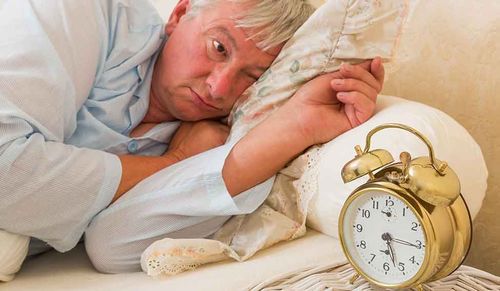
Seniors' sleep
Older people who sleep poorly and wake up several times during the night may have hardened brain arteries or oxygen-starved tissue in the brain which can increase their risk of stroke, cognitive impairment and dementia, according to a Canadian study published in the journal Stroke.
The sleep quality of 315 people was assessed for at least one full week before their death. Sleep was disrupted on average almost seven times each hour.
Brain autopsies after their death showed that 29 per cent of them had suffered a stroke and 61 per cent had moderate-to-severe damage to blood vessels in their brain.
Those who woke up the most or had the highest levels of sleep fragmentation were 27 per cent more likely to have hardening of the brain arteries. For each additional two arousals during one hour of sleep, there was a 30 per cent increase in the likelihood of having visible signs of oxygen deprivation in the brain.
The study suggests that we can potentially identify senior citizens who may be at risk of stroke by monitoring their sleep.
“The forms of brain injury that we observed are important because they may not only contribute to the risk of stroke but also to chronic progressive cognitive and motor impairment," the lead researcher noted. "I think the take-home point is that this is another reason why people ought to take care of their sleep as they get older."
Did You Know
Men who regularly consume food high in flavonoids found in blueberries, cherries, blackberries, radishes, citrus fruits and red wine are 10 per cent less likely to suffer from erectile dysfunction. Men who combined a flavonoid-rich diet with regular exercise have 21 per cent reduced risk of erectile dysfunction.
American Journal of Clinical Nutrition
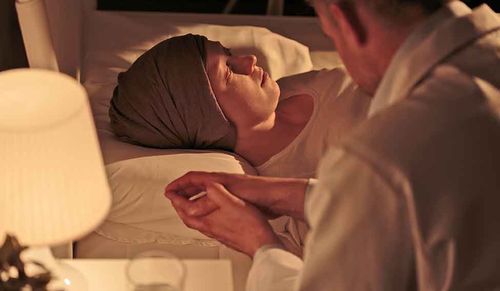
Living in deep sedation
A Japanese study in the journal Lancet Oncology suggests that giving terminally-ill cancer patients continuous deep sedation—a form of palliative sedation therapy—to ease pain does not hasten death.
It is a difficult decision for families who do not want to see their loved ones suffer, nor shorten survival.
The researchers analysed survival in 1,827 terminally-ill cancer patients in palliative care settings, 269 of whom received continuous deep sedation.
Patients who received sedation lived about 22 days compared to about 26 days for patients without sedation, a difference too small to be of any statistical significance. “Our study indicated that continuous deep sedation did not shorten patient life or change patient’s dying process.”
Nearly 60 per cent of the patients received artificial hydration. But that did not have any effect on the association between sedation and survival.
Contributor: SHYLA JOVITHA ABRAHAM



